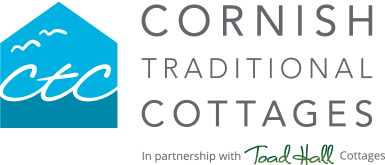Cornish New Year – Verow Trelawny bras?
 (1).jpg)
“Nightly invaded by bands of young people attired in strange grotesque costume. In almost every case the boys are dressed as girls and the girls as boys, some cleverly representing historical or local characters, others merely disguised with blackened faces…”
Jenkin, “Cornwall And Its People”
As we move along from the Winter Solstice on the 21st of December, and the days begin to get longer and lighter (although, not the actual mornings, as many have been loathe to note, until well into the New Year), one of the high points of Cornish tradition is the celebration of Boxing Day. Or New Year’s Day… or the whole period in between. Delete as applicable.
Lovers of country sports may be interested in one of the traditional Boxing Day hunts or shooting fixtures up and down the Duchy. For others, the ceremonial parades of Mummer’s Day, or “Darkie Day” as it is sometimes known (a corruption of the original name “Darking Day”), are an ancient Cornish midwinter celebration that occurs each year on Boxing Day and New Year’s Day in Padstow and other villages in Cornwall. It was originally part of the pagan heritage of midwinter (Solstice) celebrations that were regularly celebrated throughout the area. People would take part in the traditional custom of guise dancing (guizing), which involved disguising themselves by painting their faces, wearing masks or veils, and often cross-dressing.
The dark face paint, masks and dark clothing are not a racial reference, but symbolic of the darkness of the mid-winter, and in sharp contrast with the ‘white’, summer solstice festivals in Cornish towns. The most famous of these are the ‘Obby ‘Oss festival in Padstow and Golowan, in Penzance. The Montol Festival of Penzance is another winter solstice celebration during which people guise with darkly painted skin or masks to disguise themselves.
But for many, the day after Christmas will be characterised by a daytime drink in one of Cornwall’s many traditional pubs. Usually one of the busiest days of the year, certainly for daytime drinking, you’d best be there early if you want to secure a seat or order food. Once everyone is suitably well-oiled, a good crowd of the local men and women may just start singing raucously, but instead of the rugby songs and the like you might expect to hear in an English pub, there will be traditional Cornish folk songs, including without doubt the “The Song of the Western Men”, which was written by Robert Stephen Hawker in 1824, but based on a much older Cornish poem or proverb. It’s also known by the title of “Trelawny”. The chorus goes like this:
And shall Trelawny live?
And shall Trelawny die?
Here’s twenty thousand Cornish men
Will know the reason why!
The song has many verses but it’s easy to pick up. And there’s also a version in Cornish (see the title above), but good luck joining in with that one!
The atmosphere in the pub will be friendly but might just get a little loud and boisterous for some. A band may form playing tin cans or other bizarre home made instruments. Don’t worry though – eventually everyone will run out of steam, and drift away to a (usually) quiet evening, only to begin again the following afternoon and keep the spirit alive until New Year. It really is the 12 days of Christmas here in Cornwall.
There are always many lovely holiday rental properties available through Cornish Traditional Cottages – click here for special offers on great cottages, at any time of year.
